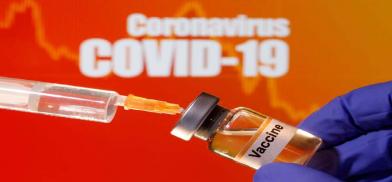Made-in-India Covid vaccine add shine to National Vaccination Day
Indigenously made COVID-19 vaccines flown to various parts of the world has added lustre to India's National Vaccination day -- an occasion celebrating the dissemination of the first dose of oral polio vaccine in 1995

Indigenously made COVID-19 vaccines flown to various parts of the world has added lustre to India's National Vaccination day -- an occasion celebrating the dissemination of the first dose of oral polio vaccine in 1995. With this launch, the massively successful Pulse Polio Campaign took wings.
At present, one of India's successful vaccination drive is Mission Indradhanus, launched in 2014. This scheme provides vaccination against eight vaccine-preventable diseases nationally. These are diphtheria, whooping cough, tetanus, polio, measles, severe form of childhood tuberculosis and Hepatitis B and meningitis and pneumonia caused by Haemophilus influenza type B; and against rotavirus diarrhea and Japanese encephalitis in selected states and districts respectively.
Vaccination drives described as the most effective method of preventing infectious diseases, have in the past successfully eradicated smallpox and polio in India.
Smallpox eradication
Smallpox - a disease caused by virus, which often proved fatal - is the only that has been eradicated by human effort. The last case was reported in Somalia in October 1977. In India till the year 1950 over 100,000 people died annually due to the disease. The country's last-known case was that of an eight-year-old boy from Bihar's Pachera village in Katihar district in May 17, 1975.
From 1962-67, a mass vaccination drive, the National Smallpox Eradication Programme was launched. The objective was to successfully vaccinate the entire population within a period of 3 years. It became apparent that even though mass vaccination reduced smallpox incidence, detection and containment were imperative.
Following this from 1968-72, the NSEP was now aimed at surveillance and a uniform national reporting system was established. Detection was given priority and States divided into epidemic and non-epidemic, with the former commanding more resources.
From 1973-75 that an intensive programme was launched. July and August of 1973 were devoted to search and containment drive in highly infected regions, while from October to December four major endemic States, Uttar Pradesh, Bihar, West Bengal and Madhya Pradesh were targeted. This phase marked the beginning of the end of smallpox and in May 1975 saw the last case of the killer disease.
Consolidating on the triumph, from 1975 to 77, strict vigilance was maintained with the adoption of "fever-with-rash surveillance" being introduced in India. The smallpox elimination was a historic achievement in a country as vast as India and with such diversity.
Pulse polio initiative
According to World Health Organization polio is a highly infectious viral disease, mainly affecting young children. Polio has no cure and can be prevented by immunization only.
In 1995 the Pulse Polio immunisation programme was commenced, under which children up to five years were administered polio drops during national and sub-national rounds annually. Besides, Rapid Response Teams in all States and UTs to respond to polio outbreak were placed. Also States developed Emergency Preparedness and Response Plans to be followed in case of polio detection.
The campaign paid dividends as the last polio case in India was reported from West Bengal's Howrah district in January 2011. This led WHO to remove India from the active endemic wild poliovirus transmission list on February 24, 2012. Two years hence, WHO's South-East Asia Region certified India as polio-free.
Since March 2014 Oral Polio Vaccination has been mandatory for those travelling between India and polio-affected countries like Afghanistan, Nigeria, Pakistan, Ethiopia, Kenya, Somalia, Syria and Cameroon.
Other vaccines
The country saw the launch of a National Immunization programme, called as Expanded Programme on Immunization in 1978, wherein BCG, OPV, DPT and typhoid-paratyphoid vaccines were introduced. Till 2011, Hepatitis-B has been added for a vaccination with six other vaccines.
Now India-made vaccines like rotavirus and human papillomavirus etc are there while the vaccine for Japanese encephalitis was developed in 2013. Also in 2008-2009, a new conjugated typhoid vaccine was produced by an Indian manufacturer.
Edward Jenner and vaccination
Edward Jenner born on May 17, 1749, in Berkeley, Gloucestershire created the first vaccine. Since the Latin word for cow is vacca, and cowpox is vaccinia; he called the new procedure vaccination
Jenner in May 1796, found a young dairymaid, Sarah Nelms, with fresh cowpox lesions on her hands and arms. Using matter from her lesions, he inoculated an eight-year-old boy, James Phipps. The boy developed mild fever and loss of appetite but soon recovered. Following this, he was inoculated with fresh smallpox lesion and didn't develop the disease.
Phipps lived on till 65 years and attended Jenner's funeral in 1832.
India's first vaccination
Anna Dusthall, a three-year-old of Bombay (present day Mumbai) was the first child in India to receive the world's first smallpox vaccine on June 14, 1802. Using the pus formed on her skin after vaccination, another five children were vaccinated. Interestingly Jenner sent threads soaked in lymph vaccine to Vienna in 1799 which then reached Baghdad via Constantinople (Istanbul). A child vaccinated from Baghdad was sent to Basra from where a batch of lymph was sent to Bombay, reaching Dusthall.
Push for vaccination
Experts feel that COVID-19 is an opportune moment for making vaccination popular among the people. By sensitizing public, not just about COVID-19 vaccine but also others, the vaccination routine can be made acceptable and part of life! India's vaccination strategy for smallpox and polio needs to be celebrated and become templates for other nations in their fight against deadly and dreadful diseases!
(Under an arrangement with indianarrative.com)








Post a Comment